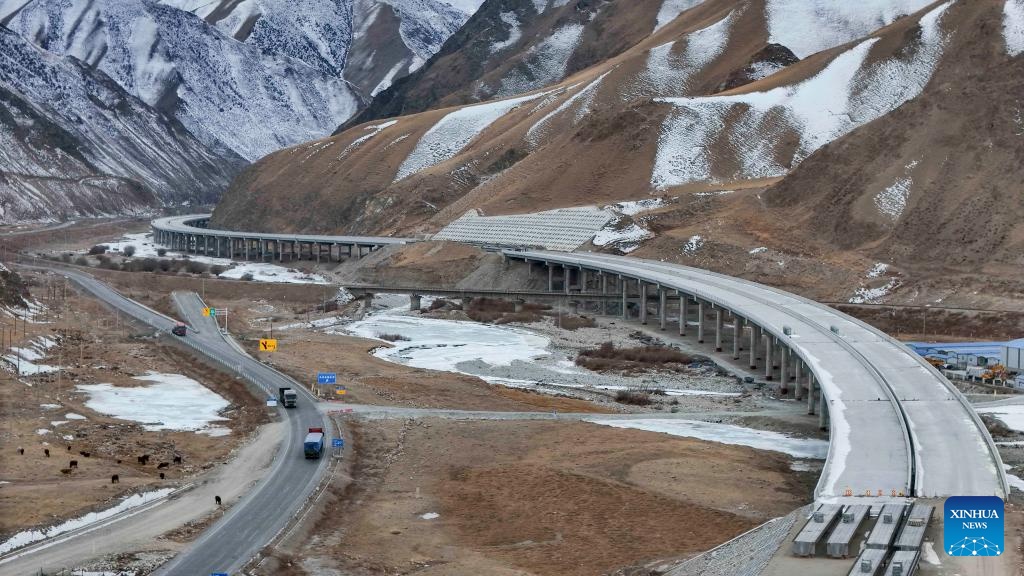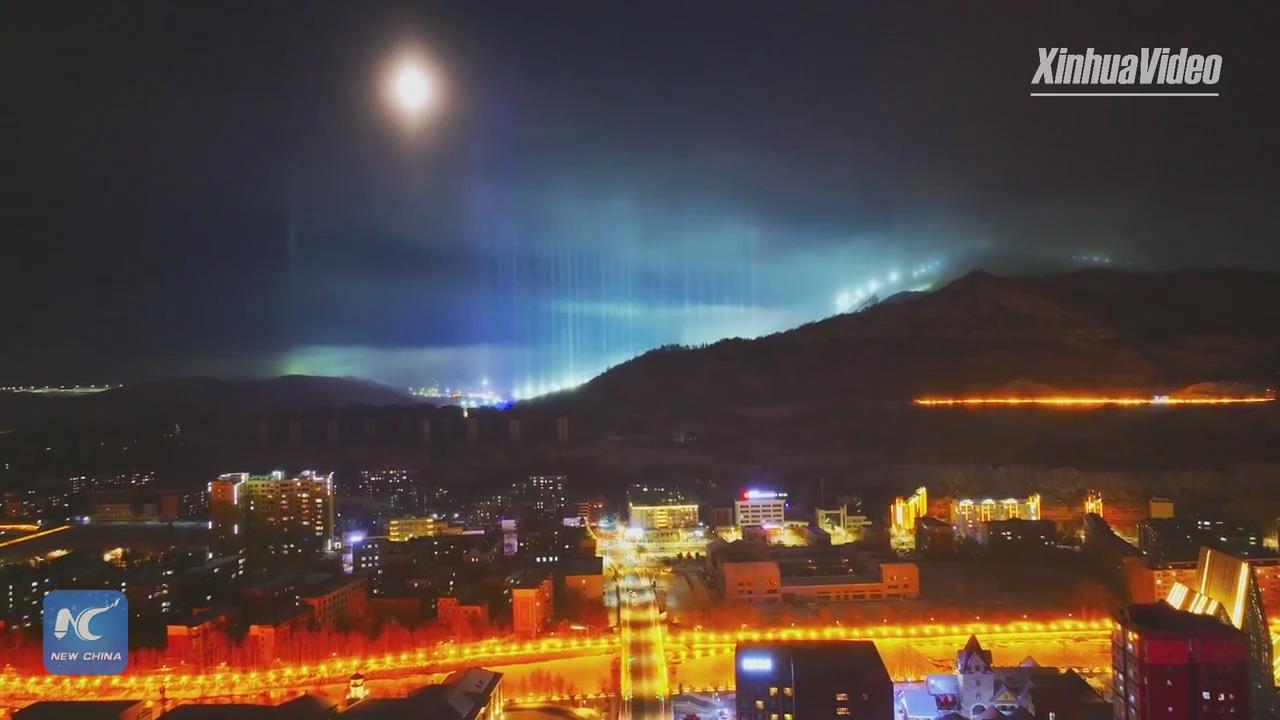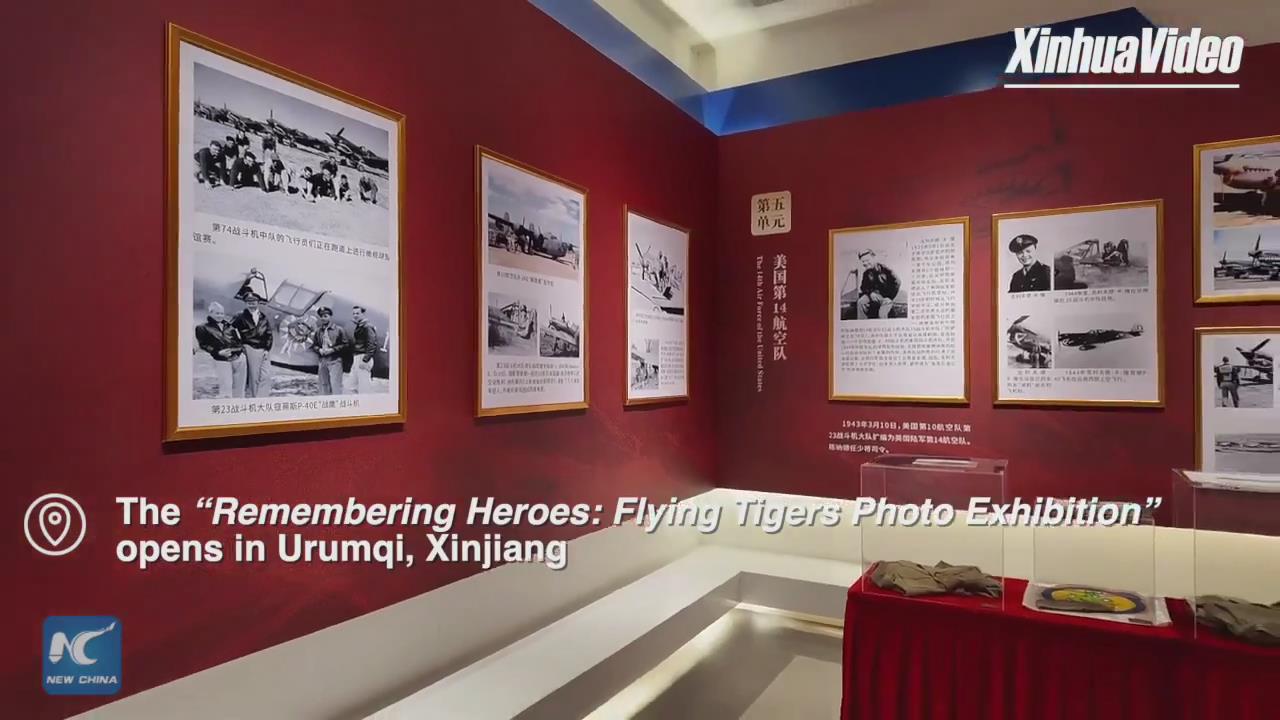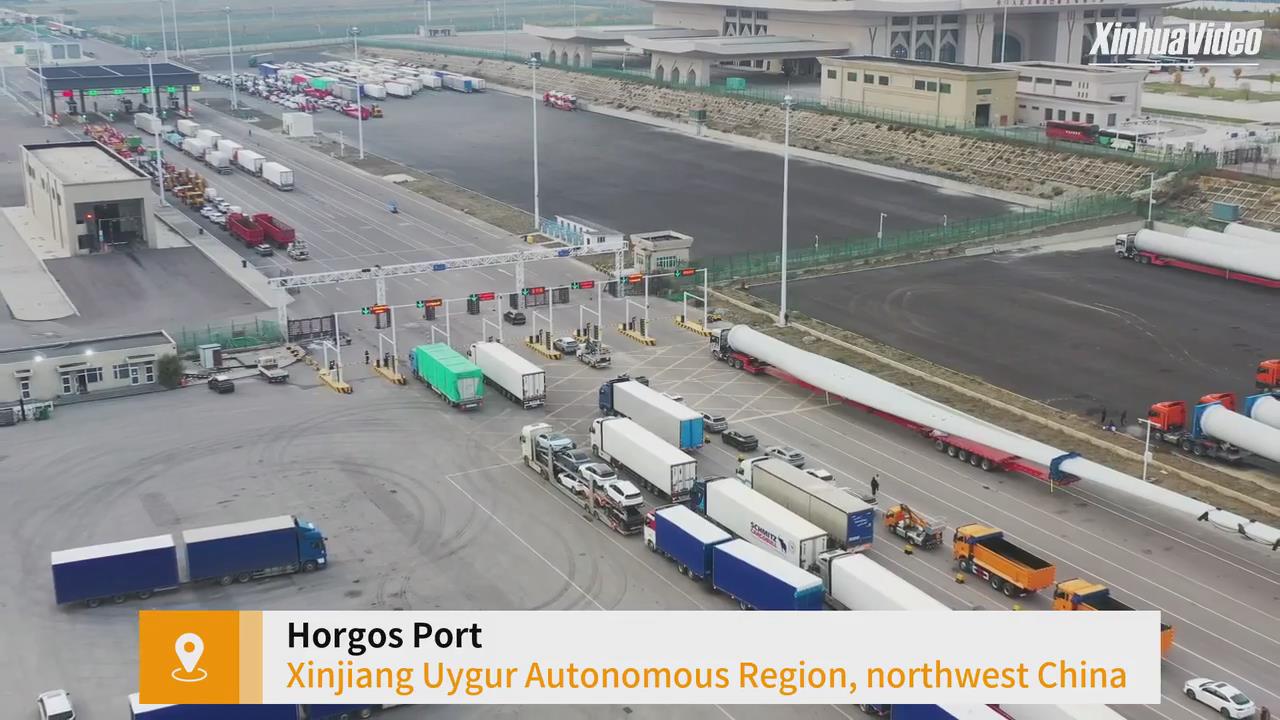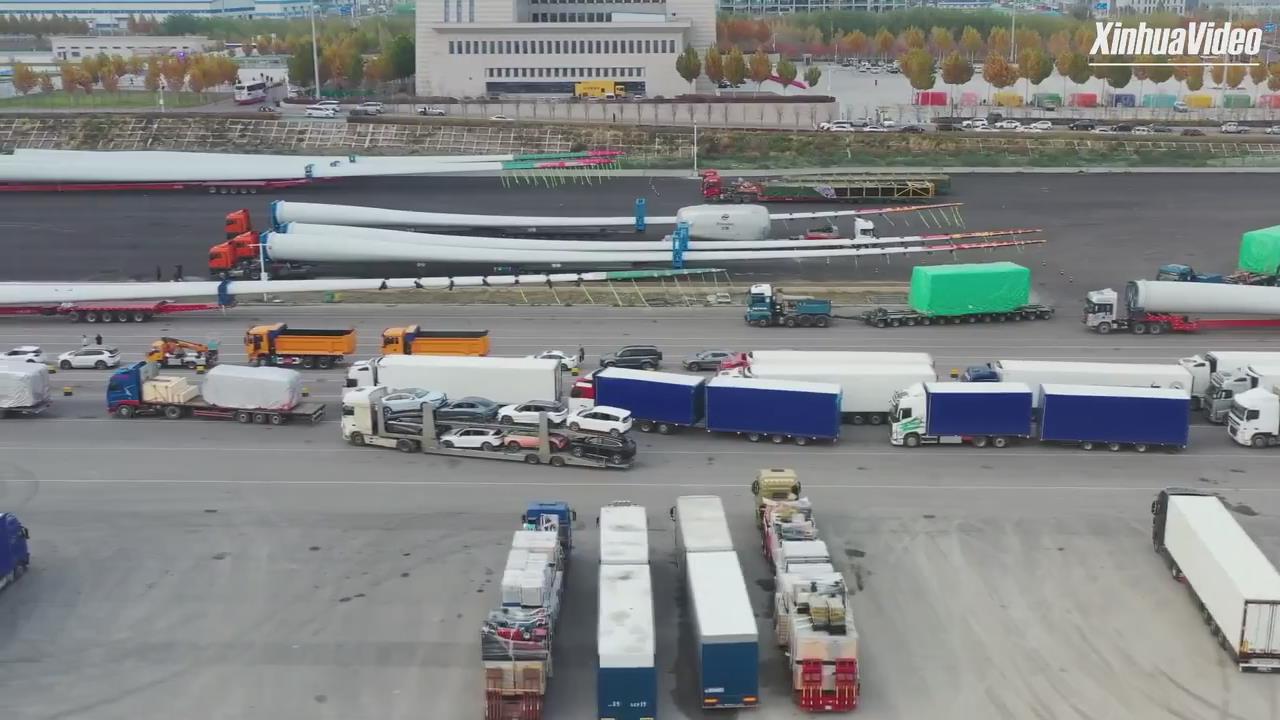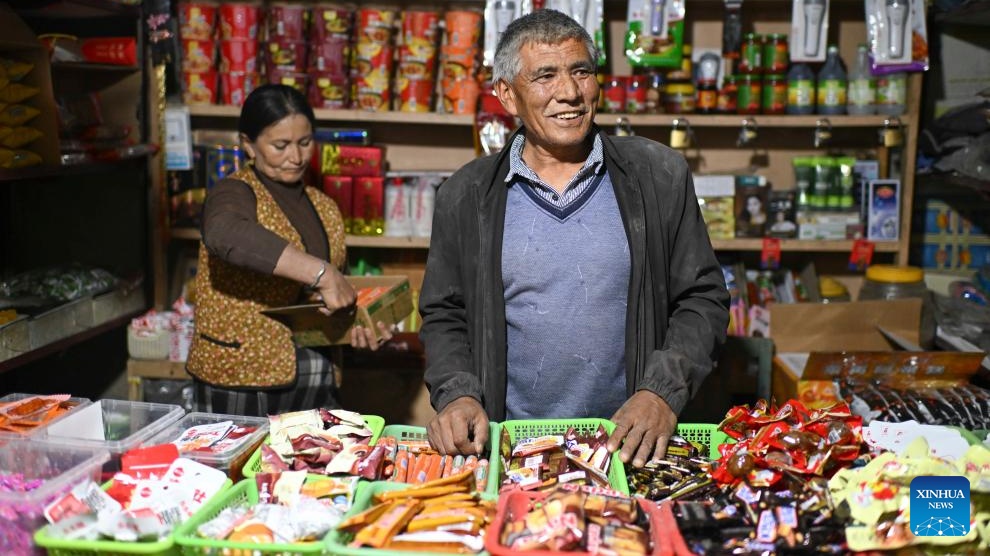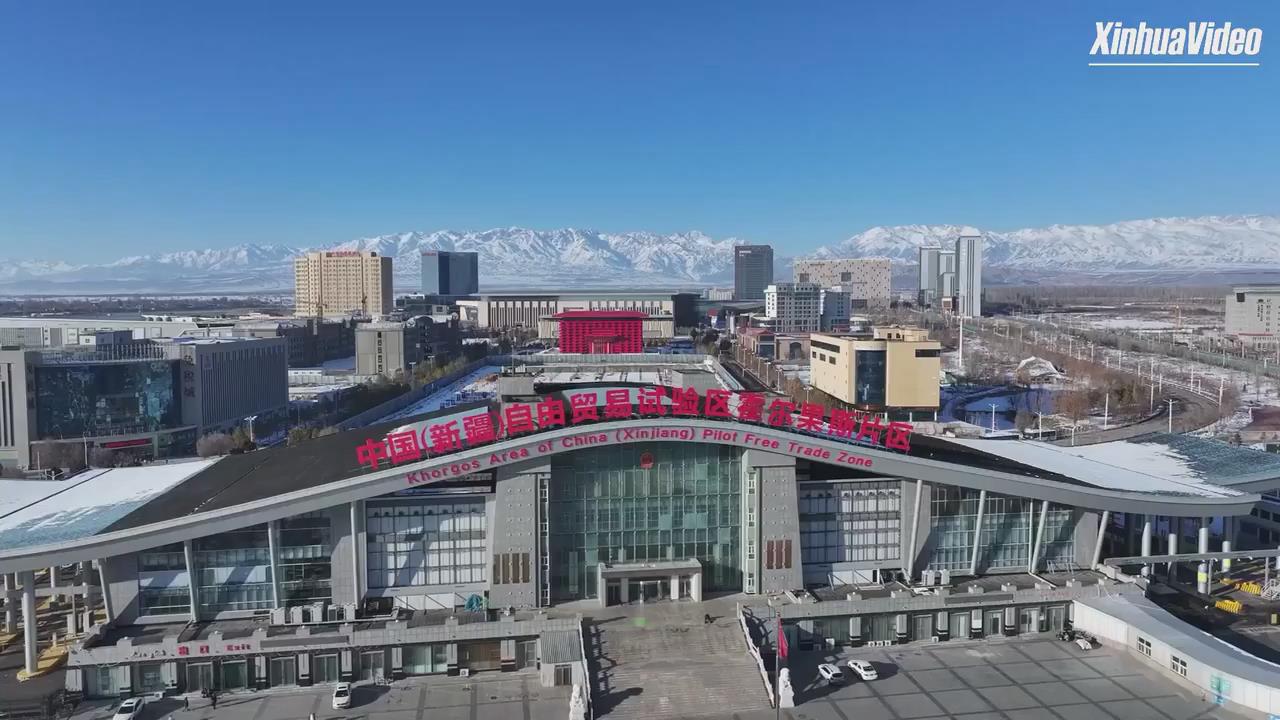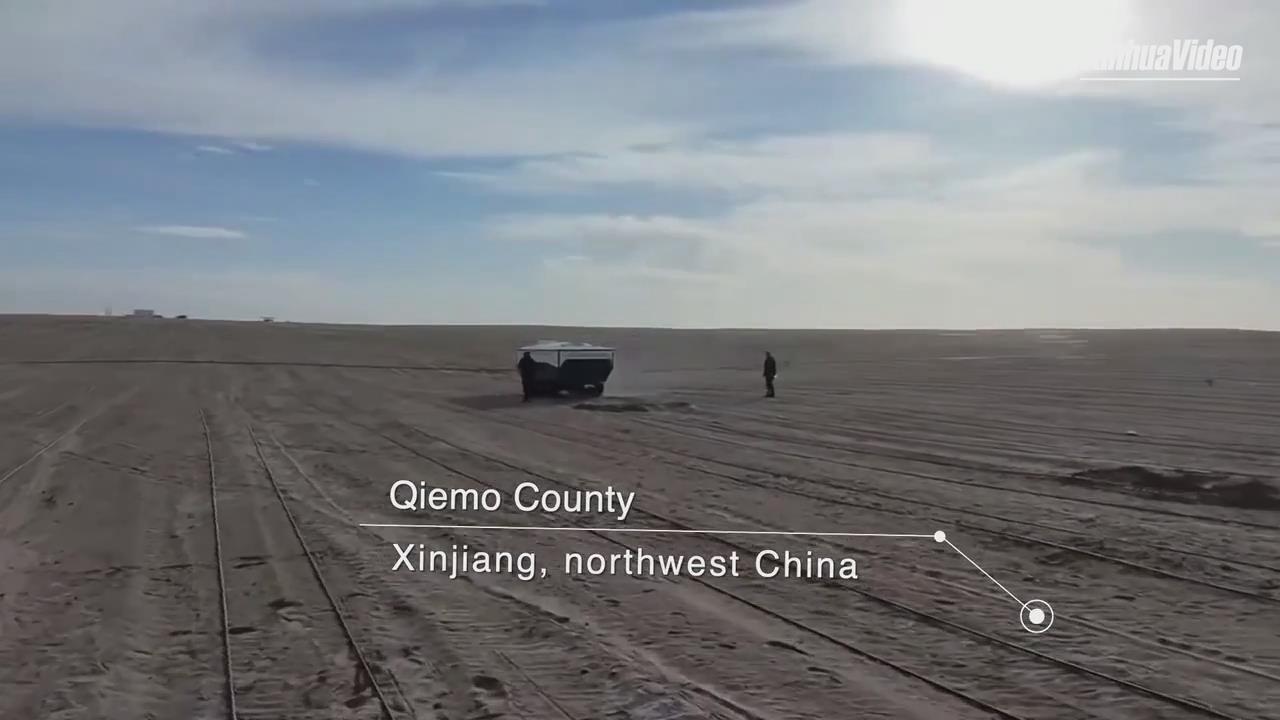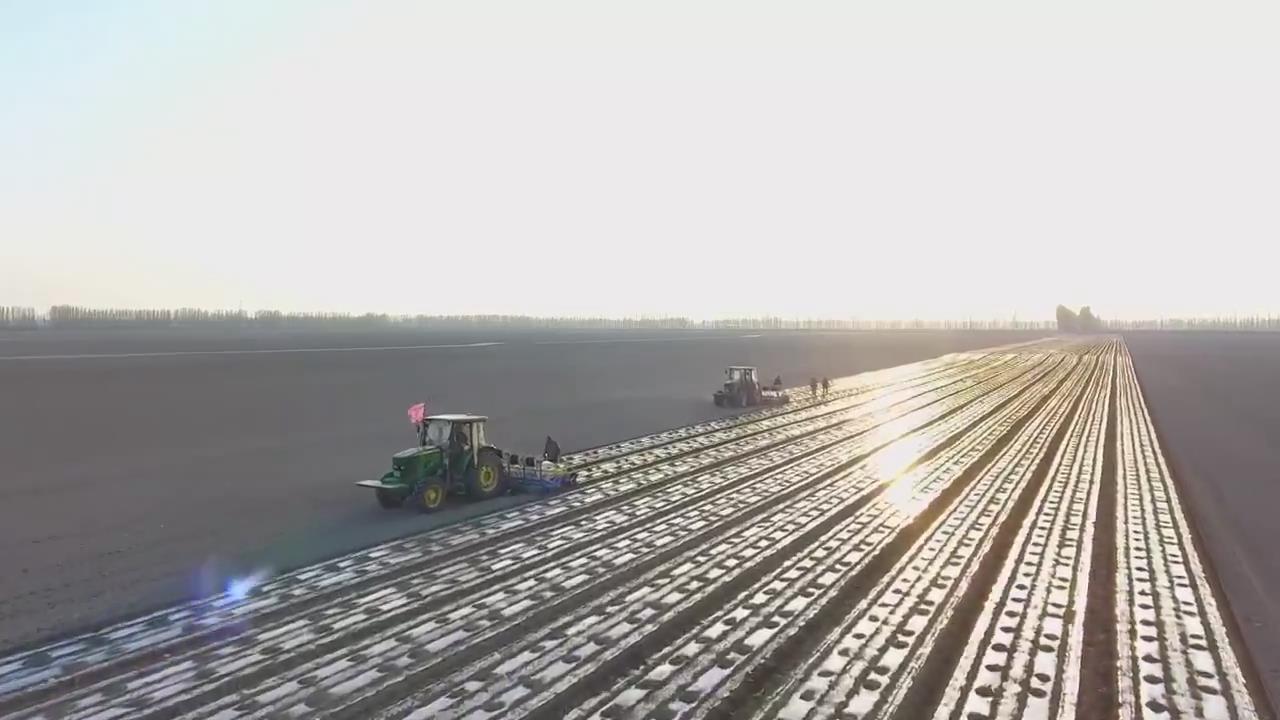Northwest China's Xinjiang Uygur Autonomous Region has been transformed from a relatively closed inland region to a frontier of opening up in recent years.
The region's total imports and exports surged 51.4 percent year on year to 63.69 billion yuan (about $8.8 billion) in the first two months of this year. Xinjiang's foreign trade achieved double-digit growth in monthly imports and exports for 28 consecutive months.
Ports in Xinjiang are becoming more thriving. Alashankou, a major port also known as Alataw Pass, has seen over 30,000 China-Europe freight trains pass through, covering 25 Chinese provinces and regions, and 21 countries.
As of March 1, over 20,000 commercial vehicles had been exported through the Horgos highway port this year, a remarkable surge of 381 percent year on year. In 2023, the commercial vehicle export volume via Horgos reached 304,000, an increase of 307.5 percent year on year.
At the unveiling ceremony of the Kashgar Area of China (Xinjiang) Pilot Free Trade Zone in Kashgar prefecture in November 2023, the first group of 35 companies received business licenses with project funds worth more than 17.6 billion yuan. In the January-February period this year, Kashgar engaged in trade with 175 countries and regions worldwide, with its total imports and exports soaring 90 percent year on year to 17.06 billion yuan.
“Going to Europe via Alashankou is the international trade channel with the shortest distance, takes the least time and has the lowest freight cost on the Silk Road," said Li Jianglin, executive deputy mayor of Alashankou city.
In 2023, the Alashankou port handled 6,635 China-Europe freight train trips, a year-on-year increase of 6.8 percent, with the shipment volume reaching 14.07 million tonnes, up 17.5 percent from the previous year, ranking first among all railway ports in Xinjiang.
Chen Qian, secretary of the Communist Youth League of Alataw Pass border station of China Railway Urumqi Group Group Co., Ltd., said the border station has put into operation a series of infrastructure projects in recent years, including 94 broad-gauge and standard-gauge rail lines and a bulk-grain rail line.
With the continuous advancement of construction projects, the throughput capacity of the Alashankou railway port is expected to increase from 20 million tonnes to 40 million tonnes in the near future, and will reach 60 million tonnes in the long term, Chen added.
Alashankou has introduced an efficient "24/7" appointment-based customs clearance mechanism, minimizing the time needed for customs clearance.
Currently, the Alashankou port and the Horgos railway port have handled more than 70,000 China-Europe freight trains since the start of their operations.
The Alashankou port has 115 operating routes for freight trains, providing connections to 25 countries and regions. The Horgos railway port offers 80 operating routes, linking 45 cities and regions across 18 countries. More than 200 different categories of goods are transported through these two ports.
Since the beginning of this year, Kashgar prefecture has launched several new air cargo routes to Moscow, capital of Russia and Bournemouth, UK, among others. In the January-February period, the total value of Kashgar's imports and exports via air routes jumped 119.6 percent.
Smooth trade channels in Xinjiang have facilitated the thriving development of various industries.
For instance, Alashankou has attracted 14 leading grain and oil processing companies and over 100 foreign trade companies. It is actively developing its grain and oil storage and processing industries, and accelerating the formation of a complete industrial chain covering production, supply, and sales.
The Alashankou Comprehensive Bonded Zone has brought together 813 enterprises, forming five clusters of distinctive industries with competitive edges, i.e. imported grain processing, timber processing, export equipment manufacturing, medical materials, and cross-border e-commerce.
In recent years, the import and export trade volume of the comprehensive bonded zone in Kashgar prefecture has seen a significant increase, driving the development of trade and logistics, processing of electronic appliances, food processing, textile and garment, and precious metal processing.
In the first two months of this year, the exports of new products represented by lithium-ion batteries, photovoltaic products, and electric vehicles in Kashgar prefecture skyrocketed 396.7 percent, while the exports of traditional products represented by household appliances, automatic data processing equipment, and mobile phones grew 80.9 percent, said Wang Xiping, director of the comprehensive business division of Kashgar Customs.
The rapid growth of new product exports precisely mirrors the accelerated foreign trade upgrading in the prefecture, Wang added.
To support the development of cross-border e-commerce and leverage the advantages of the Alashankou port and the Alashankou Comprehensive Bonded Zone, Alashankou has established a 28,000-square-meter sorting and customs clearance center for cross-border e-commerce. Local authorities have implemented an efficient and fast customs clearance process, prioritizing the declaration, sealing, and inspection of cross-border e-commerce goods.
"We have pioneered an innovative 'slow air transportation' model, enabling exported goods to reach Europe within 12 to 18 days. Its cost is only one-fifth of regular air transportation and the service takes one-sixth of the time taken by sea transportation," said Zhou Chong, deputy director of the management committee of the Alashankou Comprehensive Bonded Zone. At present, Alashankou has provided services to 508,000 e-commerce enterprises.
In addition to numerous cross-border e-commerce enterprises, shopaholics also have a fantastic destination in Horgos-the China-Kazakhstan Horgos International Border Cooperation Center. Spanning an area of 3.43 square kilometers on the Chinese side and 2.17 square kilometers on the Kazakh side, this center offers visitors 30 days of visa-free cross-border use of the facility.
When entering into the Chinese territory from the center, each visitor is allowed to carry 8,000 yuan worth of duty-free goods per day. The center received 4.18 million tourist visits in 2023, a year-on-year increase of 4.27 times.
As Xinjiang opens itself ever wider to the world, ports in the region are thriving, with foreign trade continuously maintaining a high growth rate, providing important support for the construction of the core area for the Belt and Road Initiative, said Hao Weiming, chief of Urumqi Customs.





